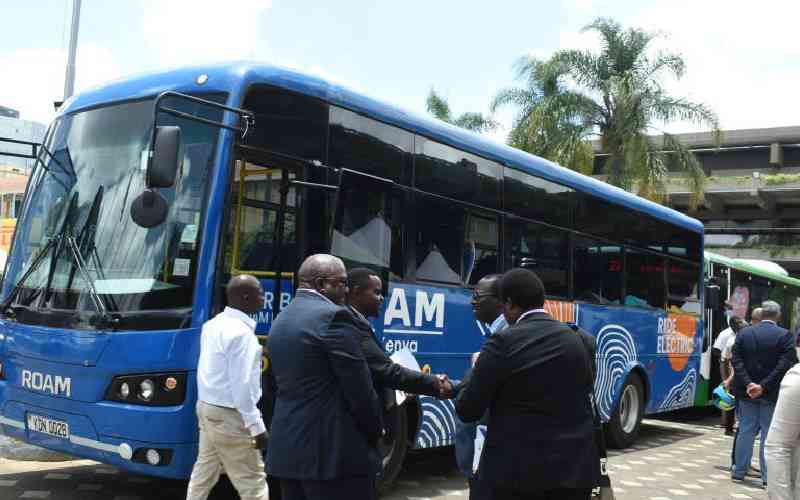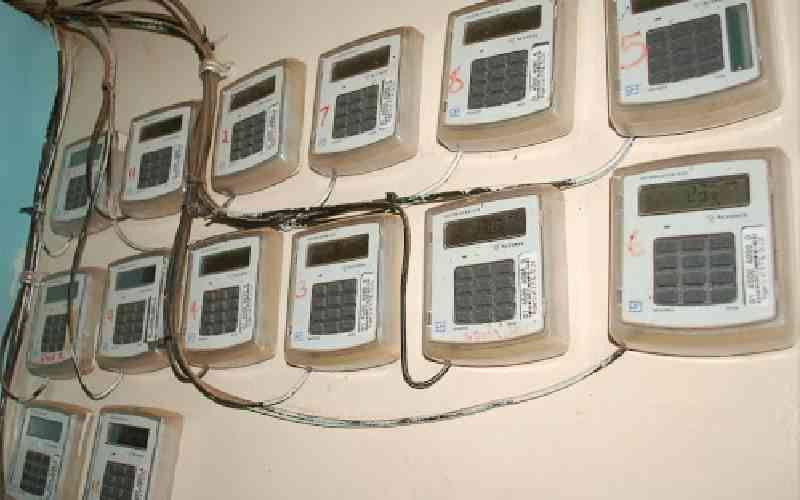More jobs and cottage industries are expected to be created this year as the Government accelerates implementation of electricity programmes, mainly in the rural areas, estimated to cost Sh23 billion.
More than 300,000 facilities, which include homes, public primary schools and commercial premises, will be connected to the national grid this year.
This, according to energy stakeholders, will improve rural development and lower costs of production, helping address the hurdles to economic growth in the country.
Energy Principal Secretary Joseph Njoroge recently said the Government’s goal is to increase connectivity from the current 32 per cent to 75 per cent over the next four years.
“This will be important if the country is to absorb the projected injection of 5,000 megawatts by 2018, which is a capacity growth of over 300 per cent ... to 6,652MW,” said Mr Njoroge.
National grid
Rural Electricity Authority (REA) Chairman Simon Gicharu added that his institution would spend Sh10.5 billion to connect about 6,000 public primary schools to the national grid by the end of June 2015.
Kenya Power, through two programmes, the Single Wire Earthing Return (SWER) system and Last Mile Connectivity Project (LMCP), will spend Sh12.2 billion to add at least 284,200 residential homes and 30,000 businesses to the grid, which translates to an additional 1.7 million people accessing electricity.
Mr Gicharu said 15,308 public primary schools have already been connected out of a targeted 21,228 institutions. Another 3,110 public schools are in the process of being connected, while 2,810 are being surveyed and designed and will likely be connected by the end of June.
Gicharu explained that the initiative would trigger high economic growth as other facilities, including coffee and dairy societies, health centres, technical institutions, trading centres and jua kali sheds, are connected.
“We are sure the connection of primary schools will contribute to widespread positive effects, for instance, growth of local businesses and emergence of new industries, thus helping create much-needed jobs and prompting wealth creation in the rural areas.”
This, he added, would support efforts to tame rural-urban migration, while enabling small enterprises undertake value addition of various produce, maximising farmers’ earnings.
“Our plan is to ensure every home is connected to the national grid within the next 10 years,” Gicharu said.
Kenya Power Managing Director Ben Chumo in December said his firm’s two projects would lower connection costs and light up huge segments of rural Kenya.
The power distributor plans to use smaller poles spaced 100 metres apart instead of the current 50 metres, a design that could lower connection costs to Sh30,000.
Stay informed. Subscribe to our newsletter
[email protected]
 The Standard Group Plc is a
multi-media organization with investments in media platforms spanning newspaper
print operations, television, radio broadcasting, digital and online services. The
Standard Group is recognized as a leading multi-media house in Kenya with a key
influence in matters of national and international interest.
The Standard Group Plc is a
multi-media organization with investments in media platforms spanning newspaper
print operations, television, radio broadcasting, digital and online services. The
Standard Group is recognized as a leading multi-media house in Kenya with a key
influence in matters of national and international interest.
 The Standard Group Plc is a
multi-media organization with investments in media platforms spanning newspaper
print operations, television, radio broadcasting, digital and online services. The
Standard Group is recognized as a leading multi-media house in Kenya with a key
influence in matters of national and international interest.
The Standard Group Plc is a
multi-media organization with investments in media platforms spanning newspaper
print operations, television, radio broadcasting, digital and online services. The
Standard Group is recognized as a leading multi-media house in Kenya with a key
influence in matters of national and international interest.








